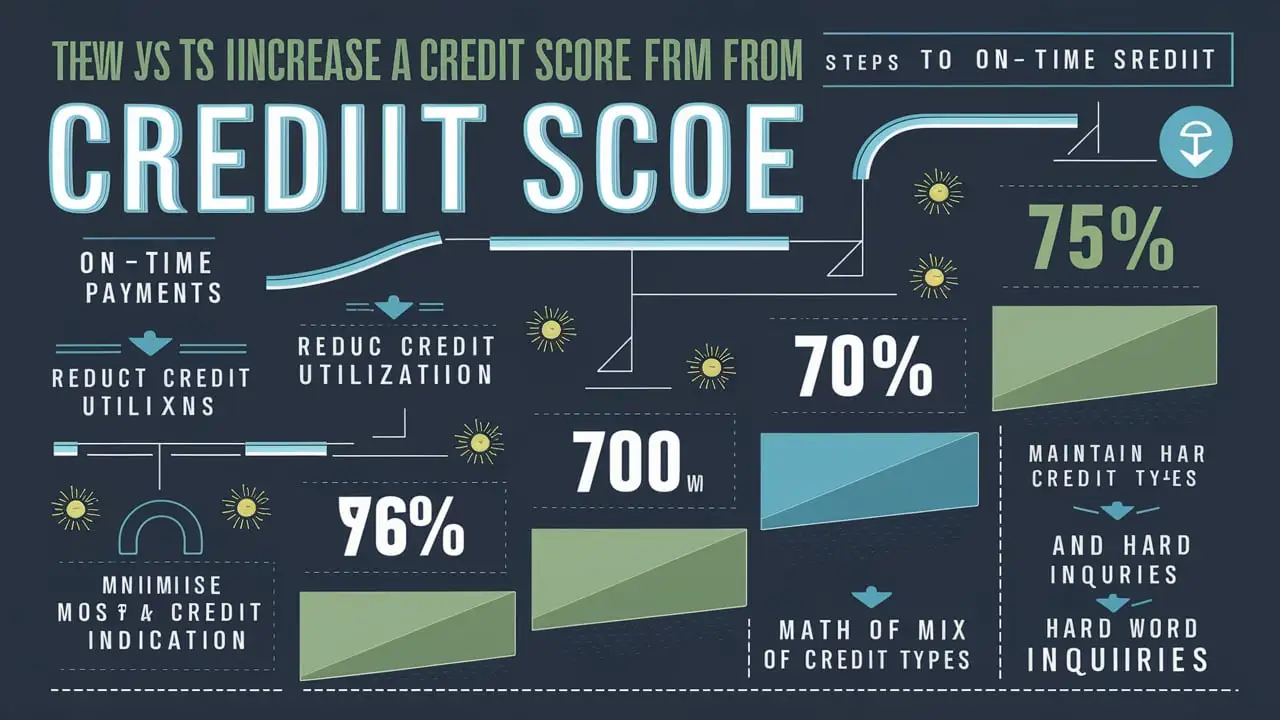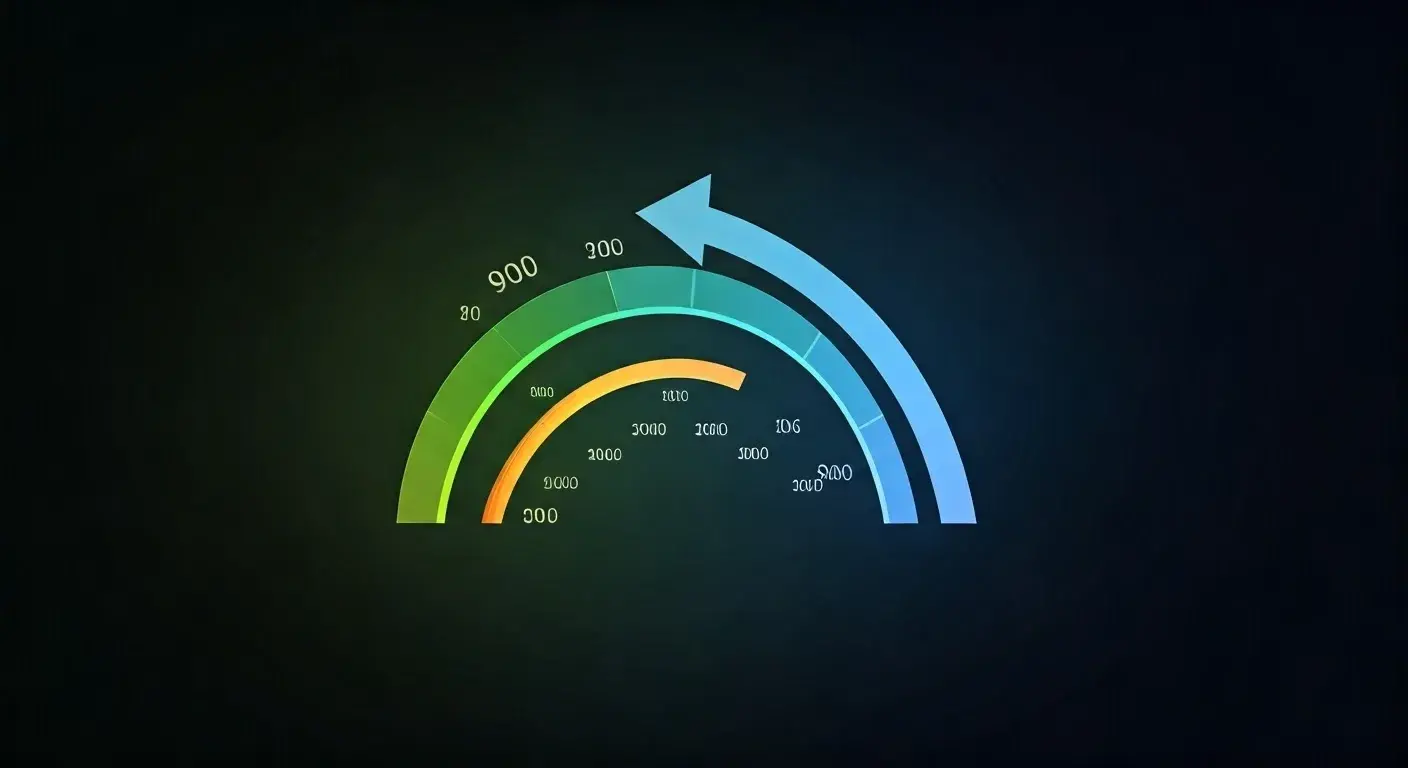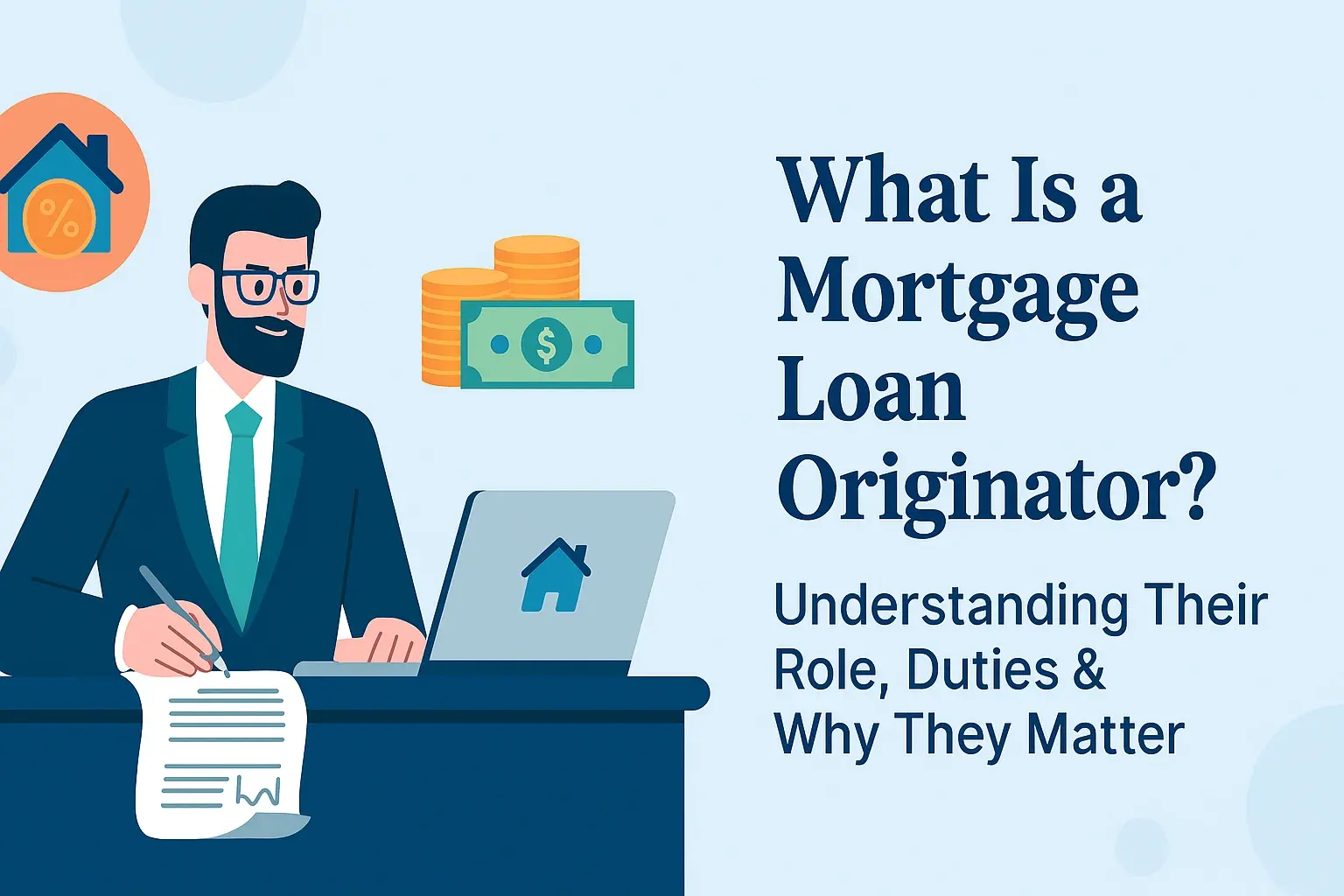-
Posted on: 01 Aug 2024

-
Elevating your credit score from 700 to 750 is an achievable goal that unlocks significant financial advantages. This guide provides a clear, actionable roadmap, focusing on proven strategies and current 2025 data to help you navigate the path to a stronger credit profile and better financial opportunities.
Understanding Credit Scores and the 700-750 Jump
A credit score is a three-digit number that lenders use to assess your creditworthiness – essentially, how likely you are to repay borrowed money. Scores typically range from 300 to 850, with higher scores indicating lower risk. Reaching the 700 mark signifies good credit, opening doors to many loan and credit card offers with reasonable interest rates. However, the jump from 700 to 750 represents a move into the "very good" to "excellent" credit tiers, which can unlock even more favorable terms, lower interest rates, and greater borrowing power. This segment will delve into what these scores mean in practical terms for your financial life in 2025.
In 2025, the credit landscape continues to evolve, with lenders increasingly relying on sophisticated algorithms that scrutinize credit reports for subtle indicators of financial responsibility. A score of 700 generally places you in a category where you can secure most standard loans, such as mortgages, auto loans, and personal loans, albeit with interest rates that might not be the absolute lowest available. The difference between 700 and 750 is significant. A score of 750 or higher is often considered the benchmark for prime borrowers, qualifying you for the most competitive interest rates, the best credit card rewards, and potentially higher credit limits. This can translate into thousands of dollars saved over the life of a loan or mortgage. For instance, on a 30-year mortgage of $300,000, a difference of just 1% in interest rate can save you over $100,000. Understanding this distinction is the first step toward strategizing your credit score improvement.
The journey from 700 to 750 isn't about a single magic bullet; it's about consistent, disciplined financial behavior. It involves refining the habits that got you to 700 and applying them with even greater precision. This often means focusing on the most impactful credit factors and making targeted adjustments. We'll explore these factors in detail, but it's crucial to recognize that this improvement phase requires patience and a strategic approach. It’s about demonstrating to credit bureaus and lenders that you are not just a reliable borrower, but an exceptional one. The financial benefits are substantial, making the effort well worth it.
The Pillars of Your Credit Score: Key Factors
Your credit score is not a mystical number; it's a calculated reflection of your financial habits. Understanding the components that contribute to your score is paramount to effectively improving it. The three major credit bureaus – Equifax, Experian, and TransUnion – use credit scoring models, most commonly the FICO score and VantageScore, to generate your credit score. While the exact algorithms are proprietary, the key factors remain consistent. In 2025, these factors continue to hold significant weight in determining your creditworthiness.
Payment History (Approximately 35% of Score)
This is the most critical factor. It reflects whether you pay your bills on time. Late payments, missed payments, defaults, and bankruptcies can severely damage your score. Even a single 30-day late payment can have a noticeable negative impact. Conversely, a consistent record of on-time payments is the bedrock of a good credit score.
In 2025, lenders are more sensitive than ever to payment streaks. A continuous history of paying all accounts on or before the due date for several years is highly valued. Even if you've had past issues, demonstrating a sustained period of perfect payment behavior can significantly boost your score over time.
Credit Utilization Ratio (Approximately 30% of Score)
This measures the amount of credit you are using compared to your total available credit. It's often expressed as a percentage. For example, if you have a credit card with a $10,000 limit and you owe $3,000 on it, your credit utilization for that card is 30%. The total utilization is calculated across all your revolving credit accounts. Experts generally recommend keeping this ratio below 30%, but for optimal scores, aiming for below 10% is even better.
In 2025, lenders are looking for responsible credit management. A high utilization ratio suggests you might be overextended, even if you make all your payments on time. Keeping balances low demonstrates that you don't rely heavily on credit to meet your financial obligations.
Length of Credit History (Approximately 15% of Score)
This factor considers the age of your oldest credit account, the age of your newest credit account, and the average age of all your accounts. A longer credit history generally indicates more experience managing credit, which is viewed favorably.
In 2025, the trend is towards valuing seasoned credit users. While you can't magically age your accounts, avoiding closing old, unused credit cards can help maintain a longer average account age. This is particularly important if your oldest accounts are in good standing.
Credit Mix (Approximately 10% of Score)
This refers to the variety of credit accounts you have, such as credit cards (revolving credit) and installment loans (mortgages, auto loans, student loans). Having a mix of credit types can show lenders you can manage different kinds of debt responsibly. However, this factor has a smaller impact compared to payment history and utilization.
In 2025, responsible management of diverse credit types is key. You don't need to open new accounts just to diversify, but if you have a healthy mix and manage them well, it contributes positively.
New Credit (Approximately 10% of Score)
This factor looks at how many new credit accounts you've opened recently and how many hard inquiries you have on your credit report. Opening many new accounts in a short period can signal increased risk to lenders, as it might suggest financial distress. Each time you apply for credit, a lender may perform a hard inquiry, which can slightly lower your score.
In 2025, a cautious approach to new credit is advised. While necessary for major purchases, avoid applying for multiple credit products simultaneously unless strategically planned.
Understanding these five pillars is the foundation for developing an effective strategy to move your credit score from 700 to 750. Each element plays a role, but some offer more leverage for improvement than others.
Actionable Strategies to Bridge the Gap
Moving from a good credit score (700) to an excellent one (750+) requires a focused approach. While you've likely established good credit habits, this next tier demands refinement and attention to detail. The following strategies are designed to directly address the key factors influencing your credit score, with an emphasis on maximizing your positive impact and minimizing negative influences. These are the actionable steps you can take in 2025 to achieve your goal.
Strategy 1: Master Your Credit Utilization Ratio
This is arguably the most impactful area for improvement when moving from 700 to 750. A credit utilization ratio below 30% is good, but for scores in the 750+ range, it needs to be significantly lower, ideally below 10%.
- Pay Down Balances Aggressively: Focus on paying down the balances on your credit cards, especially those with high utilization. Prioritize cards with the highest utilization first, or use the debt snowball/avalanche method for motivation.
- Make Multiple Payments Per Month: Instead of waiting for your statement closing date, make payments throughout the billing cycle. This can lower your reported utilization. For example, if your statement closes on the 25th, and you make a payment on the 10th and another on the 20th, your reported balance will be lower than if you only paid the full amount on the due date.
- Request Credit Limit Increases: If you have a good payment history with a particular card issuer, consider requesting a credit limit increase. If approved, this will instantly lower your utilization ratio, assuming your balance remains the same. Be cautious, as this may involve a hard inquiry, but the benefit to utilization often outweighs the small score dip. Ensure you don't increase your spending to match the new limit.
- Spread Out Your Spending: If possible, avoid maxing out any single credit card. Distribute your spending across multiple cards to keep individual utilization ratios low.
Example: Suppose you have a credit card with a $5,000 limit and a $4,000 balance. Your utilization is 80%. If you pay it down to $500, your utilization drops to 10%, a significant boost. If you also have a credit limit increase to $10,000 and keep the balance at $500, your utilization becomes 5%.
Strategy 2: Ensure Impeccable Payment History
While you likely have a good payment history to reach 700, maintaining perfection is key for the next tier.
- Set Up Autopay: Automate minimum payments for all your bills. This acts as a safety net against forgetting a due date. However, always monitor your accounts to ensure sufficient funds are available.
- Use Calendar Reminders: Supplement autopay with calendar alerts a few days before the due date. This allows you to review your statement and make additional payments if needed.
- Address Any Errors Immediately: Regularly review your credit reports from Equifax, Experian, and TransUnion. If you find any inaccuracies, dispute them promptly with the credit bureau and the creditor. Even a small error can have a ripple effect.
- Communicate with Lenders: If you anticipate difficulty making a payment, contact your lender *before* the due date. Many are willing to work out temporary arrangements to avoid a missed payment being reported.
2025 Insight: Lenders are increasingly looking for consistent positive behavior over extended periods. A single missed payment can set you back significantly, so vigilance is crucial.
Strategy 3: Optimize Credit Age and Mix
These factors have less direct control, but strategic actions can still help.
- Keep Old Accounts Open: If you have old credit cards that are in good standing and don't have annual fees, keep them open. Closing them can reduce your average age of accounts and increase your overall credit utilization ratio. Use them occasionally for small purchases and pay them off immediately to keep them active.
- Avoid Unnecessary New Credit: Resist the temptation to open new credit accounts unless absolutely necessary for a major purchase or a strategic benefit (like a 0% APR offer for a planned large purchase). Each new account application results in a hard inquiry and lowers the average age of your accounts.
- Consider a Secured Credit Card (If Applicable): If your credit history is thin or has some recent negative marks, a secured credit card can help build positive history. You deposit money as collateral, which becomes your credit limit. Use it responsibly and pay on time to demonstrate creditworthiness.
Example: If your oldest credit card is 5 years old, and you open a new one, your average age of accounts decreases. Keeping the 5-year-old card open preserves that longer history.
Strategy 4: Monitor and Dispute Errors
Credit reports are the source data for your credit score. Ensuring they are accurate is vital.
- Obtain Free Credit Reports: You are entitled to one free credit report from each of the three major bureaus annually at AnnualCreditReport.com. Take advantage of this.
- Review Thoroughly: Check for any accounts you don't recognize, incorrect personal information, or erroneous late payment notations.
- Dispute Inaccuracies: If you find errors, dispute them with the credit bureau and the creditor. Provide documentation to support your claim. The bureaus have a legal obligation to investigate.
2025 Focus: With increased digital transactions, errors can occur more frequently. Proactive monitoring is your best defense against score erosion from incorrect data.
Strategy 5: Understand the Impact of Different Credit Products
While credit mix is a smaller factor, understanding how different products affect your score is useful.
- Revolving Credit (Credit Cards): These have the biggest impact on utilization. Keeping balances low is paramount.
- Installment Loans (Mortgages, Auto Loans, Personal Loans): These are typically paid down over time with fixed payments. While they don't directly impact utilization in the same way as credit cards, consistent on-time payments are crucial. A good mix of both revolving and installment credit can be beneficial.
Example: Having a mortgage and an auto loan, and managing them perfectly, contributes positively to your credit mix and demonstrates the ability to handle long-term debt.
Strategy Primary Impact Area Actionable Steps Master Credit Utilization Credit Utilization Ratio (30%) Pay down balances, make multiple payments, request limit increases. Ensure Impeccable Payments Payment History (35%) Set up autopay, use reminders, dispute errors, communicate with lenders. Optimize Credit Age & Mix Length of Credit History (15%), Credit Mix (10%) Keep old accounts open, avoid unnecessary new credit. Monitor & Dispute Errors All Factors (via accurate data) Obtain reports, review thoroughly, dispute inaccuracies. By focusing intensely on these strategies, particularly credit utilization and maintaining a flawless payment record, you can systematically build the positive credit history that lenders look for when assigning scores in the 750+ range.
Navigating Common Pitfalls
The path to a higher credit score isn't always straightforward. Several common mistakes can hinder your progress or even cause your score to drop, especially when you're aiming for that 750 mark. Being aware of these pitfalls is as important as knowing the strategies for improvement.
Pitfall 1: Closing Old, Unused Credit Cards
As mentioned earlier, closing older credit accounts can negatively impact your credit score in two ways: it reduces the average age of your credit history and it can increase your overall credit utilization ratio by decreasing your total available credit.
Why it's a problem: If you have a card with a $10,000 limit that you're not using, and your total credit limit across all cards is $30,000, your utilization is calculated against that $30,000. If you close the $10,000 limit card, your total available credit drops to $20,000. If your balances remain the same, your utilization ratio will jump significantly.
Solution: Keep older, no-annual-fee credit cards open. Use them for a small, recurring purchase (like a streaming service) once every few months and pay it off immediately. This keeps the account active without incurring interest or high utilization.
Pitfall 2: Applying for Too Much Credit at Once
The "New Credit" factor in your score accounts for around 10% of your score. While not as significant as payment history or utilization, opening multiple new accounts in a short period can signal risk to lenders. Each application typically results in a hard inquiry, which can temporarily lower your score by a few points.
Why it's a problem: A spree of new applications can make you appear desperate for credit, suggesting you might be facing financial difficulties or are likely to take on more debt than you can manage.
Solution: Be strategic about credit applications. Only apply for credit when you genuinely need it. If you're shopping for an auto loan or mortgage, do so within a concentrated period (e.g., 14-45 days, depending on the scoring model) so that multiple inquiries for the same type of loan are treated as a single event by the scoring model.
Pitfall 3: Missing Payments (Even by a Few Days)
Payment history is the most heavily weighted factor. A single 30-day late payment can drop your score by tens of points, and it can stay on your report for seven years.
Why it's a problem: It's a clear indicator of financial instability and a higher risk of future defaults.
Solution: Implement robust systems for tracking due dates. Autopay for at least the minimum amount is a crucial safety net. Set up multiple calendar reminders. If you realize you've missed a payment, pay it immediately and contact the lender to see if they can waive any late fees or, in rare cases, prevent it from being reported to the credit bureaus (though this is uncommon for 30-day delinquencies).
Pitfall 4: Relying Solely on One Credit Account
While a single, well-managed credit card can get you to a good score, relying on just one account for all your credit needs can limit your score potential.
Why it's a problem: It limits the data points available to credit bureaus regarding your credit management. It also means that any issue with that single account (e.g., a fraudulent charge, a temporary limit reduction) has a disproportionately large impact on your overall credit profile. Furthermore, it might not demonstrate the ability to manage a mix of credit types.
Solution: Aim for a healthy credit mix, including at least one or two well-managed credit cards and potentially an installment loan if it fits your financial plan. The key is responsible management of each.
Pitfall 5: Ignoring Credit Report Errors
Errors on your credit report are more common than you might think. These can include incorrect personal information, accounts that don't belong to you, or inaccurate payment statuses.
Why it's a problem: Even minor errors can negatively affect your score. If you don't dispute them, they remain on your report and continue to drag down your score.
Solution: Make it a habit to pull your credit reports from Equifax, Experian, and TransUnion at least once a year. Review them meticulously and dispute any inaccuracies immediately through the official channels provided by the credit bureaus.
Pitfall 6: Using Too Much of Your Available Credit (High Utilization)
This is a recurring theme because it's so critical. Many people who reach a 700 score might still be carrying balances that, while manageable, keep their utilization ratio above the optimal 10-30% range required for excellent scores.
Why it's a problem: A high utilization ratio signals to lenders that you are heavily reliant on credit, increasing the perceived risk of default.
Solution: Actively work to reduce your credit card balances. Aim to keep your utilization below 10% on each card and overall. This often requires a dedicated effort to pay down debt.
Pitfall Negative Impact Preventative Measure Closing Old Cards Reduces average age, increases utilization. Keep old, no-fee cards open; use occasionally. Too Many New Applications Multiple hard inquiries, lowers average account age. Apply strategically; consolidate inquiries for rate shopping. Missed Payments Significant score drop, stays on report for 7 years. Automate payments, set reminders; pay immediately if missed. Reliance on One Account Limited data, higher impact of issues, lacks credit mix. Maintain a few well-managed accounts, including installment loans. Ignoring Errors Score remains artificially low due to inaccurate data. Regularly review credit reports and dispute inaccuracies. High Credit Utilization Signals high credit reliance and risk. Aggressively pay down balances; aim for <10% utilization. By actively avoiding these common pitfalls, you can ensure that your efforts to improve your credit score are not undermined by avoidable mistakes. This proactive approach is crucial for sustained progress toward your 750 credit score goal.
Realistic Timelines and Expectations
Improving your credit score is a marathon, not a sprint. While some actions can yield quick results, reaching a 750 credit score from 700 requires consistent effort and time. Understanding realistic timelines will help you stay motivated and manage your expectations.
How Long Does It Take?
The timeframe to go from 700 to 750 can vary significantly based on your current credit profile, the specific strategies you employ, and how diligently you adhere to them.
-
Quick Wins (Within 1-3 Months):
- Reducing Credit Utilization: If you have high balances on your credit cards, paying them down significantly can show an improvement in your score within 1-2 billing cycles. For example, reducing utilization from 80% to 10% can lead to a noticeable jump relatively quickly.
- Disputing Errors: If you successfully dispute and remove negative or inaccurate information, your score can improve as soon as the correction is reflected on your credit report, which typically takes 30-45 days.
-
Moderate Progress (3-12 Months):
- Consistent On-Time Payments: While a single late payment has an immediate negative impact, a sustained period of perfect payments will gradually rebuild trust with lenders and contribute to score increases.
- Building Positive Credit History: If you are using new credit products (like a secured card) responsibly, you'll start to see positive impacts as this history develops.
-
Long-Term Gains (12+ Months):
- Increasing Credit Age: The average age of your accounts will naturally increase over time. This is a slow but steady contributor to your score.
- Establishing a Strong Credit Mix: If you are strategically acquiring different types of credit and managing them well, the positive impact of a diverse credit history will grow over years.
General Expectation for 700 to 750: For most individuals, a realistic timeline to move from a 700 credit score to a 750 credit score is between **6 to 18 months**. This assumes consistent application of the strategies discussed, particularly focusing on credit utilization and maintaining a perfect payment history. If your credit report contains significant negative items (like recent bankruptcies or charge-offs), it may take longer.
Factors Influencing the Timeline
- Starting Point: How close are you to 700? If you're at 700 and have a few minor issues to fix, it might be faster than if you're at 700 but have a very thin credit file or some older negative marks.
- Severity of Negative Items: While you might have a 700 score, if it's buoyed by otherwise good behavior despite a few older, less severe negative marks, the path might be shorter. If your 700 is fragile, meaning it's just above the threshold and any slip-up would be detrimental, then building a more robust score takes time.
- Your Financial Habits: The speed at which you can pay down debt and your discipline in avoiding new debt will directly impact how quickly you can improve your credit utilization, which is a major driver of score increases.
- Credit Bureau Reporting Cycles: Negative information typically appears on your report within 30 days of occurrence. Positive actions, like paying down a balance, will be reflected on your next statement closing date and reported to the bureaus shortly thereafter. This means score updates happen monthly.
What to Expect in Terms of Score Changes
Score increases are rarely linear. You might see a significant jump after reducing your credit utilization, followed by smaller, incremental gains as your payment history lengthens and your credit mix diversifies.
Example:
- Month 1-3: Aggressively pay down credit card balances. Expect a potential score increase of 20-50 points as utilization drops significantly.
- Month 4-9: Continue to maintain low utilization, ensure all payments are on time, and avoid new credit. Expect steady, smaller gains of 5-15 points per month as positive payment history builds.
- Month 10-18: Focus on maintaining all positive habits. As your credit history ages and your credit mix potentially improves (if strategically done), you might see further gradual increases.
2025 Data Point: According to industry analysis in early 2025, individuals who actively manage their credit utilization to below 10% and maintain perfect payment histories can often see their scores climb by 50-100 points within a year to 18 months, assuming a clean credit report otherwise.
Patience and Persistence
It's crucial to understand that building excellent credit is a long-term endeavor. Avoid quick-fix schemes or credit repair services that promise instant results, as these are often scams. Focus on the proven strategies, be patient, and celebrate the small victories along the way. Consistent, responsible financial behavior is the most reliable path to a 750 credit score.
The Rewards of Reaching 750
Achieving a credit score of 750 or higher is a significant financial milestone. It places you in the "excellent" credit tier, unlocking a host of benefits that can save you substantial amounts of money and provide greater financial flexibility. In 2025, the advantages of a prime credit score are more pronounced than ever.
Lower Interest Rates on Loans and Credit Cards
This is the most immediate and impactful benefit. Lenders offer their lowest interest rates to borrowers with excellent credit because they are considered the lowest risk.
- Mortgages: A 750+ score can qualify you for the lowest mortgage rates. Over 30 years on a $300,000 loan, this could save you tens of thousands of dollars in interest compared to someone with a 700 score. For example, a 6.5% rate vs. a 7.5% rate can mean a difference of over $60,000 in total interest paid.
- Auto Loans: Similar savings apply to car loans. A lower APR means lower monthly payments and less interest paid over the life of the loan.
- Personal Loans: Whether for debt consolidation, home improvements, or unexpected expenses, a 750+ score will secure the most competitive personal loan rates.
- Credit Cards: You'll qualify for premium rewards credit cards with the best sign-up bonuses, cashback rates, travel perks, and 0% introductory APR offers.
Higher Credit Limits
With excellent credit, lenders are more confident extending larger lines of credit. This can be beneficial for managing cash flow, making larger purchases, or simply having a larger emergency buffer.
Easier Approval for Loans and Credit
Beyond just better terms, a 750+ score significantly increases your chances of being approved for credit products. This is especially true in competitive markets or when applying for high-demand products.
Better Insurance Rates
In many states, insurance companies (including auto and homeowners insurance) use credit-based insurance scores to help determine premiums. A higher credit score often correlates with lower insurance rates, as studies suggest a link between credit behavior and the likelihood of filing claims.
Rental Application Advantages
Landlords often run credit checks on potential tenants. A score of 750+ makes you a highly desirable tenant, potentially giving you an edge over other applicants and sometimes even allowing for a lower security deposit.
Utility and Cell Phone Service Deposits
Many utility companies and cell phone providers require security deposits from individuals with lower credit scores. With excellent credit, you can often bypass these deposits, saving upfront costs.
Negotiating Power
A strong credit score gives you significant negotiating power. Whether you're buying a car, negotiating a loan, or even looking for a new apartment, being a prime borrower means you're in a better position to ask for better terms.
Financial Peace of Mind
Ultimately, a 750+ credit score provides a sense of financial security. Knowing you can access credit at the best rates when you need it can alleviate stress and provide peace of mind, allowing you to focus on other financial goals.
2025 Market Snapshot: Data from early 2025 indicates that the spread between the lowest and highest interest rates offered by lenders continues to widen, making an excellent credit score more valuable than ever. The average interest rate for a 30-year fixed-rate mortgage for borrowers with scores below 650 can be 1-2% higher than for those with scores above 740. This gap translates to thousands of dollars in savings annually.
The effort invested in moving your credit score from 700 to 750 is an investment in your financial future. The rewards are tangible, saving you money and opening up opportunities that can significantly improve your quality of life.
Conclusion
Transitioning from a 700 to a 750 credit score is a strategic and attainable objective that promises significant financial rewards. By focusing on the core pillars of creditworthiness—payment history, credit utilization, credit history length, credit mix, and new credit—you can systematically enhance your credit profile. The most impactful strategies for this specific jump involve aggressively reducing your credit utilization ratio to below 10% and ensuring an absolutely flawless payment history.
Be vigilant against common pitfalls like closing old accounts unnecessarily or applying for credit too frequently. Patience is key; while some improvements are visible within months, building a truly excellent credit score takes time, often between 6 to 18 months for this specific score range improvement. The benefits of a 750+ score are substantial, including lower interest rates on mortgages, auto loans, and credit cards, higher credit limits, and better insurance premiums. This enhanced financial standing can save you thousands of dollars and provide greater flexibility.
Your actionable next step is to review your current credit utilization and create a plan to pay down balances. Simultaneously, set up robust systems to guarantee on-time payments for all your obligations. Consistent, disciplined financial management is your most powerful tool. Embrace this journey, and the financial advantages of an excellent credit score will be well within your reach.











